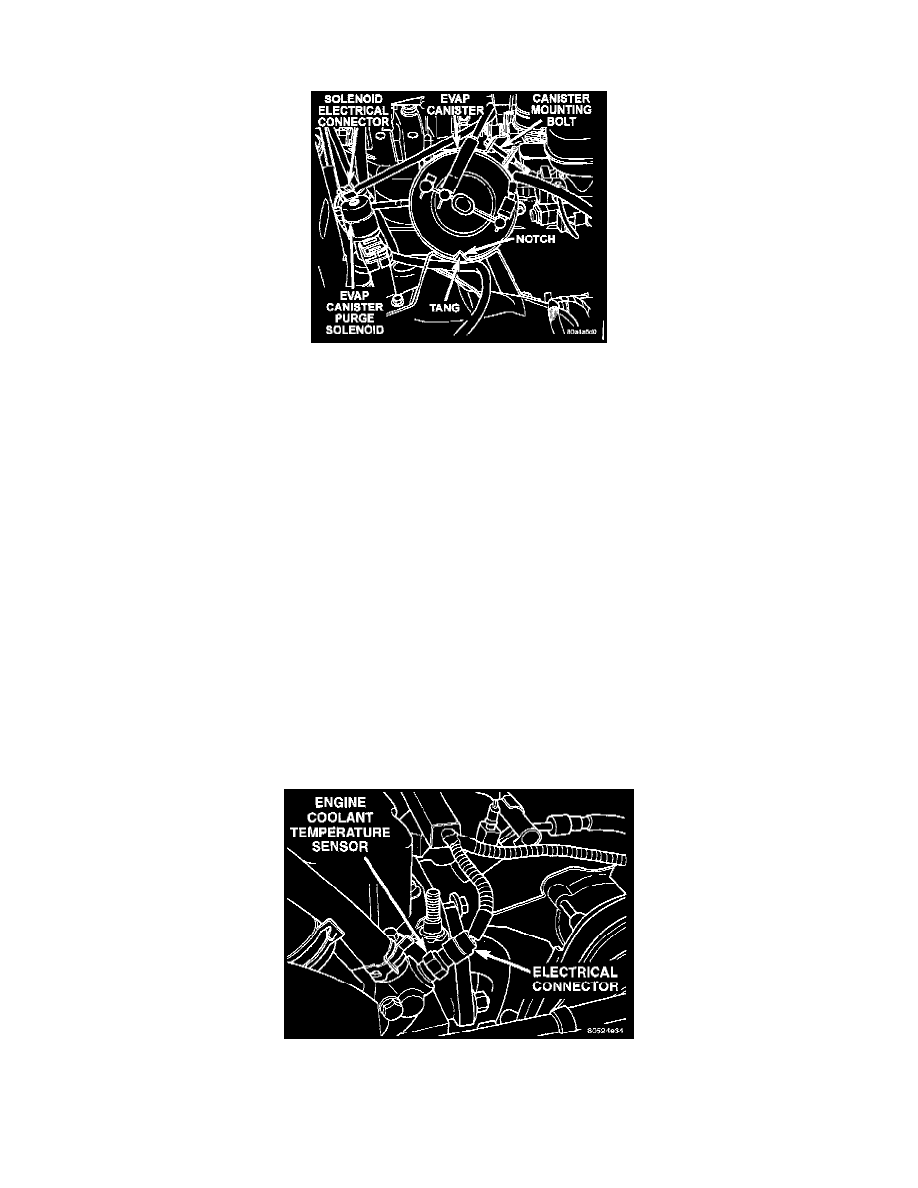Wrangler 4WD L4-150 2.5L VIN P MFI (1998)

Duty Cycle EVAP Purge Solenoid Valve-PCM Output
EVAP Canister Location, On Left Front Inner Fender.
DUTY CYCLE EVAP CANISTER PURGE SOLENOID
All models are equipped with a duty cycle EVAP canister purge solenoid. The solenoid regulates the rate of vapor flow from the EVAP canister to
the intake manifold. The Powertrain Control Module (PCM) operates the solenoid.
During the cold start warm-up period and the hot start time delay, the PCM does not energize the solenoid. When de-energized, no vapors are
purged. The PCM de-energizes the solenoid during open loop operation.
The engine enters closed loop operation after it reaches a specified temperature and the time delay ends. During closed loop operation, the PCM
cycles (energizes and de-energizes) the solenoid 5 or 10 times per second, depending upon operating conditions. The PCM varies the vapor flow
rate by changing solenoid pulse width. Pulse width is the amount of time that the solenoid is energized. The PCM adjusts solenoid pulse width
based on engine operating condition.
The solenoid attaches to a bracket located in the engine compartment near the EVAP canister (Fig. 2). The top of the solenoid has the word UP or
TOP on it. The solenoid will not operate properly unless it is installed correctly.
CIRCUIT OPERATION
When the ignition switch is in the START or RUN position, it connects circuit A1 from fuse 3 in the Power Distribution Center (PDC) to circuit
A21. Circuit A21 powers circuit F12 through fuse 11 in the fuse block. Circuit F12 supplies power to the Duty Cycle EVAP/Purge solenoid.
The Powertrain Control Module (PCM) provides the ground path for the solenoid on circuit K52. Circuit K52 connects to cavity C20 of the PCM.
Engine Coolant Temperature Sensor-PCM Input
Fig. 4 Engine Coolant Temperature Sensor-Typical
ENGINE COOLANT TEMPERATURE SENSOR-PCM INPUT
The engine coolant temperature sensor is installed in the thermostat housing (Fig. 4) and protrudes into the water jacket. The sensor provides an
input voltage to the Powertrain Control Module (PCM) relating coolant temperature. The PCM uses this input along with inputs from other
